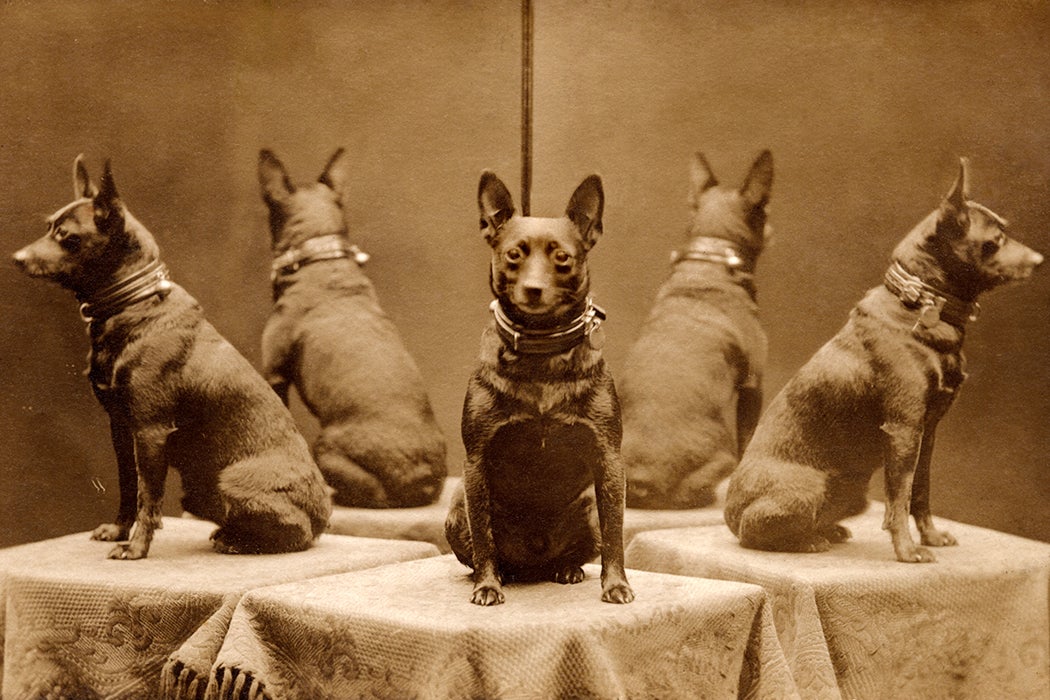Dogs don’t get autism (as far as we know), but that hasn’t prevented some people within the anti-vaccination movement from refusing to immunize their dogs. That’s the news from Paul A. Offitt, a pediatrician who recently wrote about the new phenomenon of canine vaccine refusal in The Daily Beast. But it’s not the only time people have stressed about whether to treat rabies in dogs, reveals John K. Walton. During the late Victorian era, rabies sparked a contentious debate between pet owners and veterinary experts about how to regulate dog health.
Though it’s hard to estimate the numbers of pets owned in Victorian England, writes Walton, pet ownership seems to have skyrocketed during the nineteenth century. The leisured class kept dogs for sport and their moneyed laps, investing in dog breeding for desirable characteristics and indulging in dog shows and clubs. As dogs became big business, so did dog journals: magazines that showed off the well-bred dogs of well-bred people.
But there was another group of dogs in England, “a burgeoning canine proletariat of the ownerless and uncared-for.” These dogs roamed city streets and were blamed on low-class city dwellers who didn’t license their dogs and who used them for dogfights. And as time went on, stray dogs and the threat of rabies began to scare the upper classes.
In 1885, writes Walton, no fewer than 27 people died of rabies, and since dogs roamed city streets, urban dwellers became afraid of suffering random bites and contracting hydrophobia (the historic name for rabies, drawn from a stage of infection in which people experience fear of water and can’t drink anything). But as momentum for government intervention through the newfangled rabies vaccine or compulsory dog muzzling grew, so did arguments against government control of dogs.
By 1895, despite sporadic and unpopular muzzling campaigns, 672 cases of rabies in humans were recorded in England. And Walton cites developments within the new world of pet lovers as the reason rabies was ultimately eradicated in England.
Pet journals supported muzzling dogs, but at first it seemed that nobody else did. Noblemen, worried that their beloved fox hunts would be put to an end by muzzled dogs, protested. Pet owners called the practice cruel, and commercial dog breeders joined the protest. Part of the issue was confusion as to how rabies spread: Even scientists did not yet understand that an infected dog’s saliva, not just its bite, could spread the virus. But when muzzling proposals that would exempt sporting dogs from the requirements came along, the sporting industry fell in line.
Pet owners—still a relatively new group—stayed committed anti-muzzlers, arguing that muzzling didn’t work, was cruel, and infringed on personal liberties. And the arguments raged throughout the 1890s.
Ultimately, it was science, not public opinion, that ended England’s arguments about rabies. Louis Pasteur’s theory that rabies was transmitted through saliva, and the vaccine he developed, eventually gained public acceptance. Britain was almost entirely rabies-free by 1903, and since 1902, there have only been 26 deaths from rabies in the UK. Will that change with the growth of the anti-vaccine movement? Check back in a century for more.







